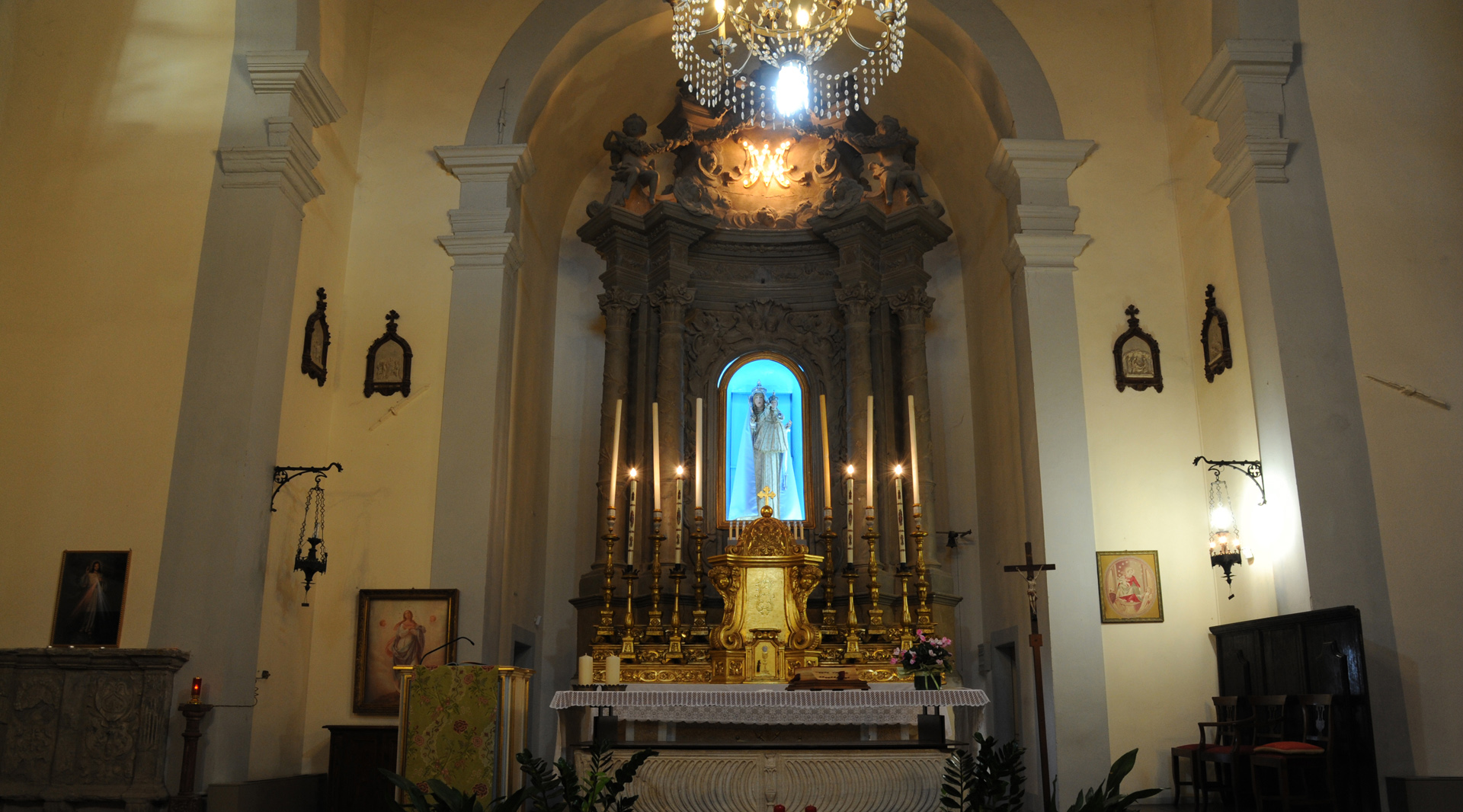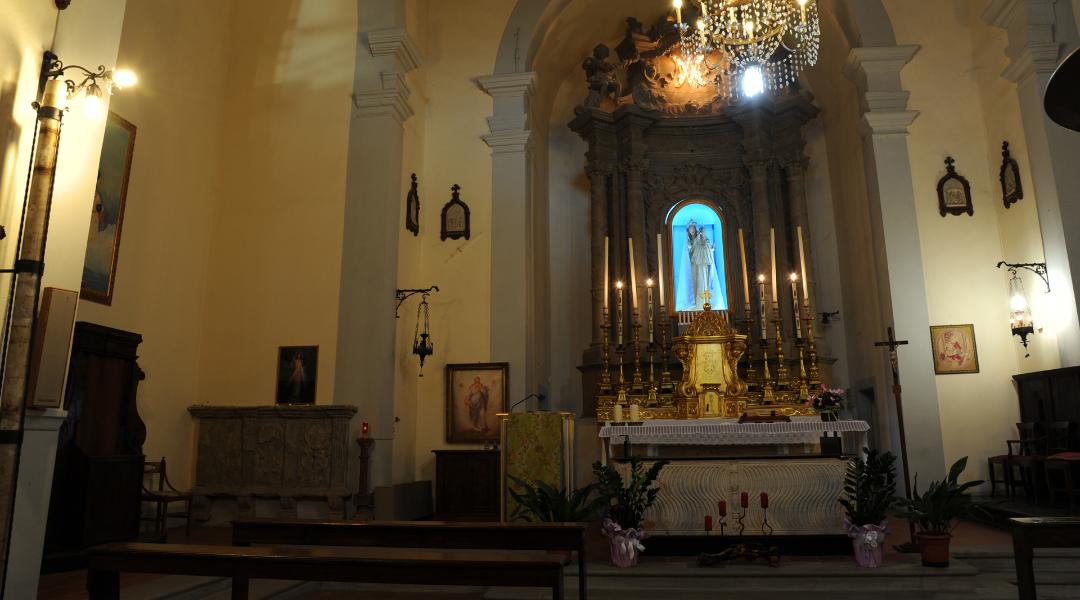RIGHT WALL
A stone slab dating back to the 12th century is preserved Inside a small chapel, with symbols related to the Old and New Testaments. Along the right wall, a valuable wrought-iron railing, dating back to the 16th century, gives access to the BOUBON NOBLE CHAPEL, erected in 1613 from the marquis Gianbattista Bourbon del Monte.
THE MAIN ALTAR
Described for the first time in the pastoral visit of 1784, it is in the Baroque style and each decoration has been derived from the processing of the Serena stone. The central reliquary hosts a valuable wooden reproduction of the Madonna and Child, artwork of an unknown sculptor of the 14th century. Considered since the Middle Ages not just as the protector, but also the first castellan of Monte Santa Maria, the statue has on its arm the silver keys of the village, which are traditionally given to the Virgin in the occasion of the Ascension festival, the main celebration of the village, during which the statue is carried in a solemn procession around the walls of the village.
LEFT CHAPEL OF THE ALTAR
It holds the external part of a sarcophagus in sandstone dating back to the 16th century, embedded in the wall. Another sarcophagus, from the Early Christian era, now serves as the base for the modern altar.
On the right side of the main altar and in front of the modern organ, a big wooden hatch allows the access to the church’s crypt, equipped for burials, as it was common until the Napoleonic Age.
This surrounding area - not open to the public - has tombs and gravesites.



































